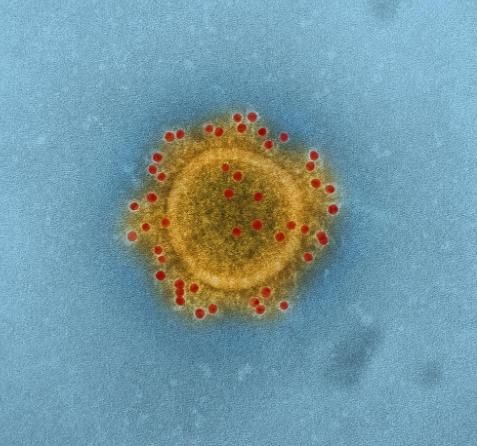New Predictor for Severe COVID-19 Anticoagulation
Adding thromboelastogram to D-dimer measure could enable early ID of patients who require aggressive anticoagulation for severe COVID-19.

Obtaining thromboelastogram (TEG) analysis along with D-dimer levels enables early identification of patients who could benefit from aggressive anticoagulation therapy for severe coronavirus 2019 (COVID-19) symptoms, according to a new study that links fibrinolysis shutdown to the thromboembolic events in severe COVID-19.
"These study results suggest there may be a benefit to early TEG testing in institutions that have the technology to identify COVID-19 patients who may need more aggressive anticoagulation therapy to prevent complications from clot formation," said study lead author Franklin Wright, MD, of the University of Colorado Anshutz Medical Campus, in a statement.
The TEG analysis is a whole blood, point of care measure of several parameters that is traditionally used in trauma, transplant and cardiothoracic surgery.
Wright and colleagues sought to determine the potential of the specialized coagulation test to examine the clotting diathesis in COVID-19 patients. They noted that viral infections have previously been found to predispose patients to prothrombotic states; and that one series of COVID-19 patients in the intensive care unit (ICU) demonstrated venous thromboembolism (VTE) in 27%, and arterial thrombosis in 3.7%.
In their study of 44 patients admitted to a specially designated "Surge" COVID-19 ICU, TEG was drawn in an attempt to identify hypercoagulability early in the patients' course, "thereby providing a potential window for therapeutic intervention," Wright and colleagues explained.
The primary study outcomes were VTE events and new onset renal failure requiring dialysis. The investigators described VTE as a macro-thrombotic event, while renal failure was considered a potential micro-thrombotic complication, based on histological reports of micro thrombosis in kidneys of COVID-19 victims. Arterial thrombotic events were also evaluated, which manifested as strokes in this cohort.
An analysis by receiver operating characteristic curve (AUROC) was performed to determine the relative utility of TEG, conventional coagulation assays (fibrinogen, PT and PTT), and D-dimer for predicting thromboembolic outcomes and new onset renal failure.
Investigators observed the TEG parameter for lysis at 30 minutes (LY30) was statistically significantly linked to VTE, with an AUROC of 0.742 (P = .021). The TEG α-angle and D-dimer were significantly associated with new onset need for dialysis (0.771 [P = .035] and 0.779 [P = .005], respectively).
Wright and colleagues also found that these critically ill patients with COVID-19 were clearly hypercoagulable despite high normal or frankly elevated PT and PTT levels, "demonstrating the importance of using whole blood coagulation assays, which more closely approximate in vivo conditions including the presence of cells and platelets, such as the TEG for improved risk stratification."
Investigators suggested that TEG LY30 serves as a better prognostic marker and potential identifier for this population at risk for thrombotic complications than other coagulation measurements.
"As a rapid test to demonstrate complete fibinolysis shutdown, an LY30 of 0% in conjunction with D-dimer levers of 2600ng/ml may serve as a sensitive marker for the patients most at risk for VTE and other thrombotic complications," Wright and colleagues concluded.
As there were marked D-dimer elevations and TEG LY30 levels of 0% in patient samples drawn more than 2 weeks into their ICU course, when their ISTH score for DIC remained low, the researchers posit that there could be prolonged imbalance between native tPA and plasminogen activator inhibitor 1 (PAI1), a strong inhibitor of the fibrinloytic system.
The possibility that there is need for more aggressive anticoagulation or fibrinolytic therapy in these patients is the impetus for a new trial to test the efficacy and safety of intravenous tPA (tissue plasminogen activator) in improving respiratory function and oxygenation--and ultimately reducing duration of mechanical ventilation, successful extubation, and survival.
Ernest Moore, MD, Director of Surgical Research, Ernest E Moore Shock Trauma Center at Denver Health, is third author on the Wright study, and principal investigator of the new trial to assess 2 doses of tPA against a control group in patients infected with COVID-19 with severe respiratory failure.
"Consideration of therapies that are widely available but not recognized for this indication and traditionally considered 'high risk' such as fibrinolytic agents is warranted in this unprecedented public health emergency," Moore and colleagues stated in the trial protocol.
